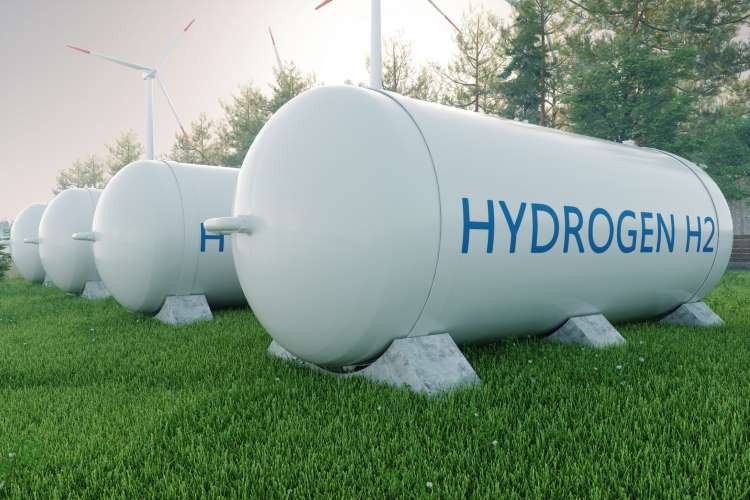On India’s 75th Independence Day, Prime Minister Narendra Modi announced the National Green Hydrogen Mission which looks to make the country a production and export hub of green hydrogen. The mission was approved by the Union Cabinet with an initial outlay of Rs 19,744 crore ($2.3 billion) over the next five years.
To provide a fillip to green energy initiatives, the country looks to give green hydrogen producers incentives worth at least 10% of their cost under a $2 billion scheme. The scheme is set to be launched before June. This comes at a time when countries across the world are scrambling to reduce carbon dioxide emissions in the wake of rising global temperatures.
Green hydrogen: The Holy Grail
India has set an ambitious target of becoming a net-zero carbon emitter by 2070. To achieve this goal, the country has been exploring various options to increase its renewable energy capacity, including the use of green hydrogen. Green hydrogen, produced from renewable sources like wind and solar power, has the potential to revolutionise the energy sector by providing a clean and sustainable alternative to fossil fuels. The focus of the government is on green hydrogen as it has the potential to maximise decarbonisation of the energy sector and the use of energy in end-use sectors such as transport, buildings and industry. Consultancy firm McKinsey calculates that the price of Hydrogen will be cost competitive by 2030.
READ | India must promote foreign investment in legal services
To that end, the ministry of new and renewable energy (MNRE) has also identified green hydrogen as a priority area for research and development. The government has also set up the National Hydrogen Energy Mission to accelerate the deployment of hydrogen technologies in the country.
India’s potential for green hydrogen production is immense. The country is blessed with abundant solar and wind resources which can be used to produce green hydrogen through electrolysis. According to a study by the Council on Energy, Environment, and Water (CEEW), India has the potential to produce over 1,700 TWh of solar and wind power by 2030 which can produce up to 17 million tonnes of green hydrogen. This is equivalent to 5% of India’s current primary energy consumption.
The nation also has a big advantage in terms of its geography. While North India has a huge riverine and canal system, the Southern part has long coastlines. India also gets almost round-the-year sunlight to enable use of renewable energy for running electrolysers.
Hurdles to green hydrogen initiative
While India’s green hydrogen potential is significant, and the government has been taking various measures to develop the sector, there are several roadblocks that need to be overcome to help the nation fully realise its potential. One of the biggest challenges is the cost of green hydrogen production. Currently, the cost of green hydrogen production is higher than that of fossil fuel-based hydrogen. This makes it uncompetitive in the market.
To address this issue, industry insiders and analysts have been voicing out for the government to provide incentives and subsidies to promote the use of green hydrogen. In the wake of the same, the government is planning to give incentives worth at least 30 Indian rupees per kg for production of green hydrogen fuel. The cost of manufacturing green hydrogen, which is made using renewable energy rather than power derived from fossil fuels, in India is currently at about 300 rupees per kg.
Another challenge is the lack of infrastructure for green hydrogen production, storage, and distribution. India needs to develop a robust infrastructure for green hydrogen, including hydrogen refuelling stations, pipelines, and storage facilities. This calls for significant investment and both private and the government sector must be on board to pool such massive amounts of capital.
Among other issues, India needs to ramp up electrolysers manufacturing in the country as it is a key component in the production of green hydrogen. According to IEA (International Energy Agency), as of 2021 the global manufacturing capacity of electrolysers stands at 8 GW/year. If India were to achieve its 2030 target, it would need anywhere from 60-100 GW of electrolyser capacity. This is almost 12 times the current global production capacity.
The country will also need access to critical minerals such as nickel, platinum group metals and rare earth metals such as lanthanum, yttrium and zirconium lest it could hinder scaling up electrolyser manufacturing capability in India. While these minerals are concentrated in countries such as China, Democratic Republic of Congo (DRC), Australia, Indonesia, South Africa, Chile and Peru, India does not only have a supply side issue but it also lacks resources to process these minerals.
What governments and policymakers globally need to do is to shepherd the transition to the hydrogen energy revolution. As G20 host, special onus rests on New Delhi to create the new global order for sharing of benefits of green energy. The fossil fuel based order is not only polluting but heavily tipped in favour of either the developed nations or authoritarian petro-states. Ironically, the Gulf states with huge sovereign funds, ample land, sunshine, and sea water can remain important players even as the world decarbonises.
In India, special focus must also be put in ensuring that financially endowed groups simply do not muscle competition out of their way. For that, strict anti-trust and competition rules must be applied to ensure that the transition is state-led and not state-sponsored. Analysts believe that the government will need to develop an equitable model of Green Public Private Sector Partnership (GPPP) towards that end.

